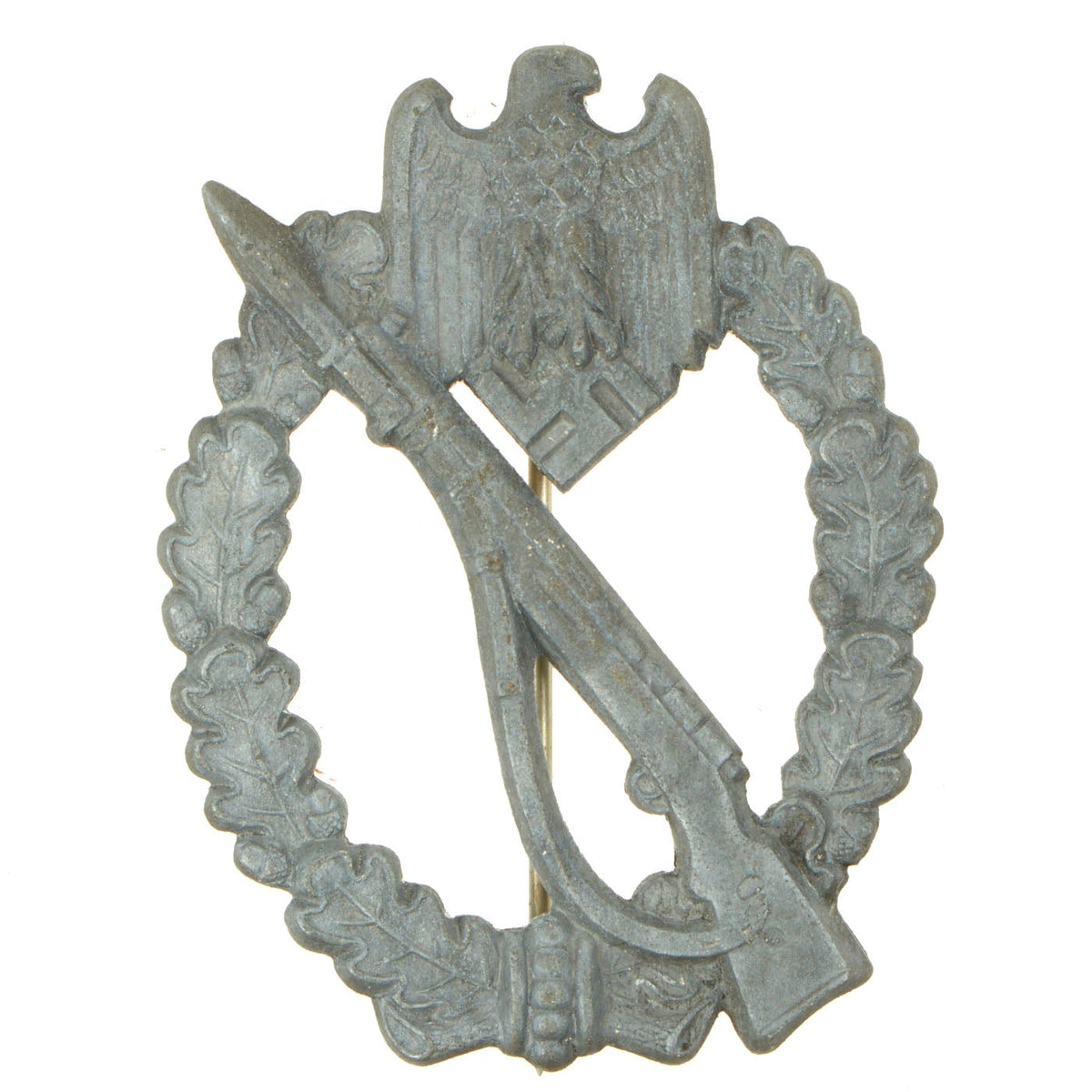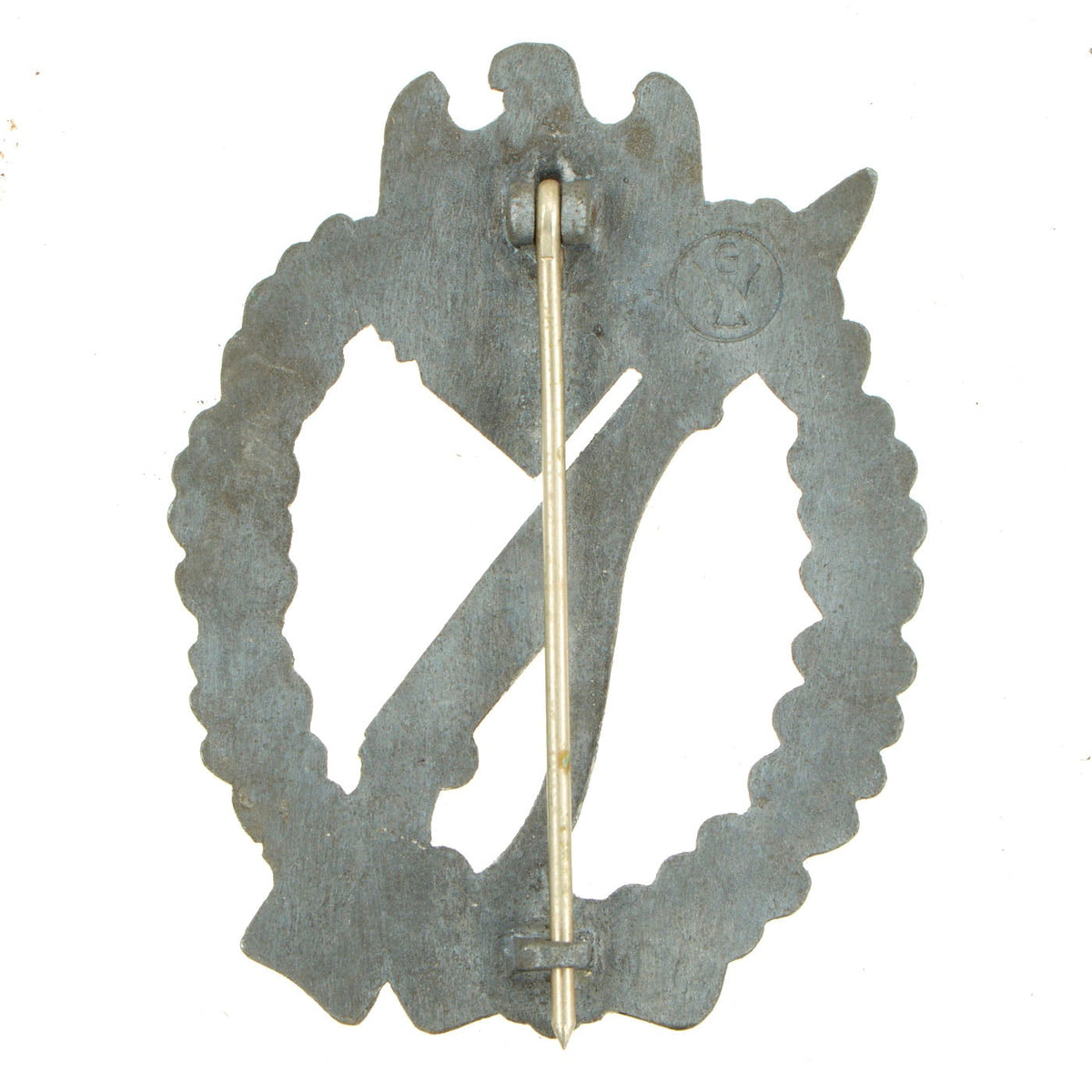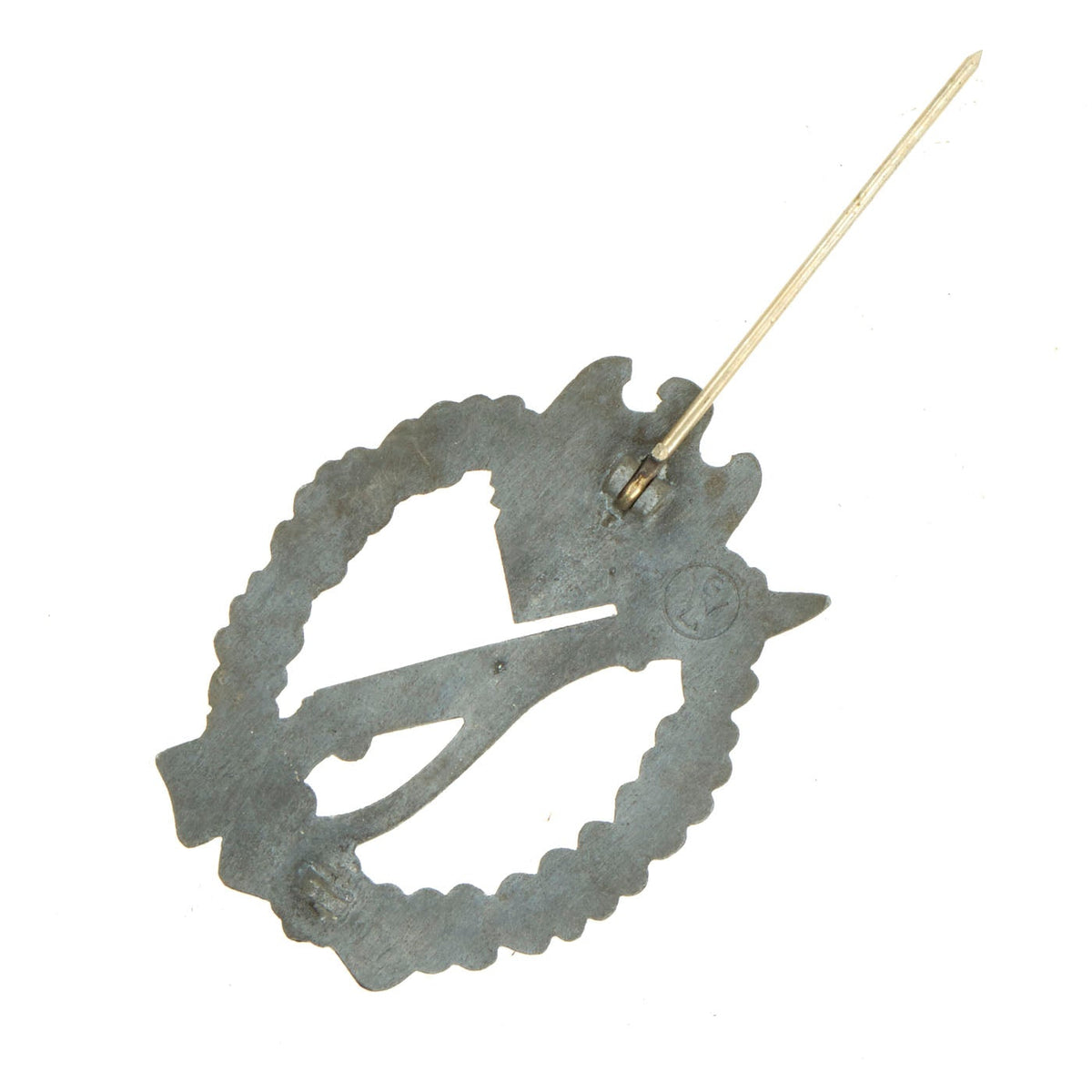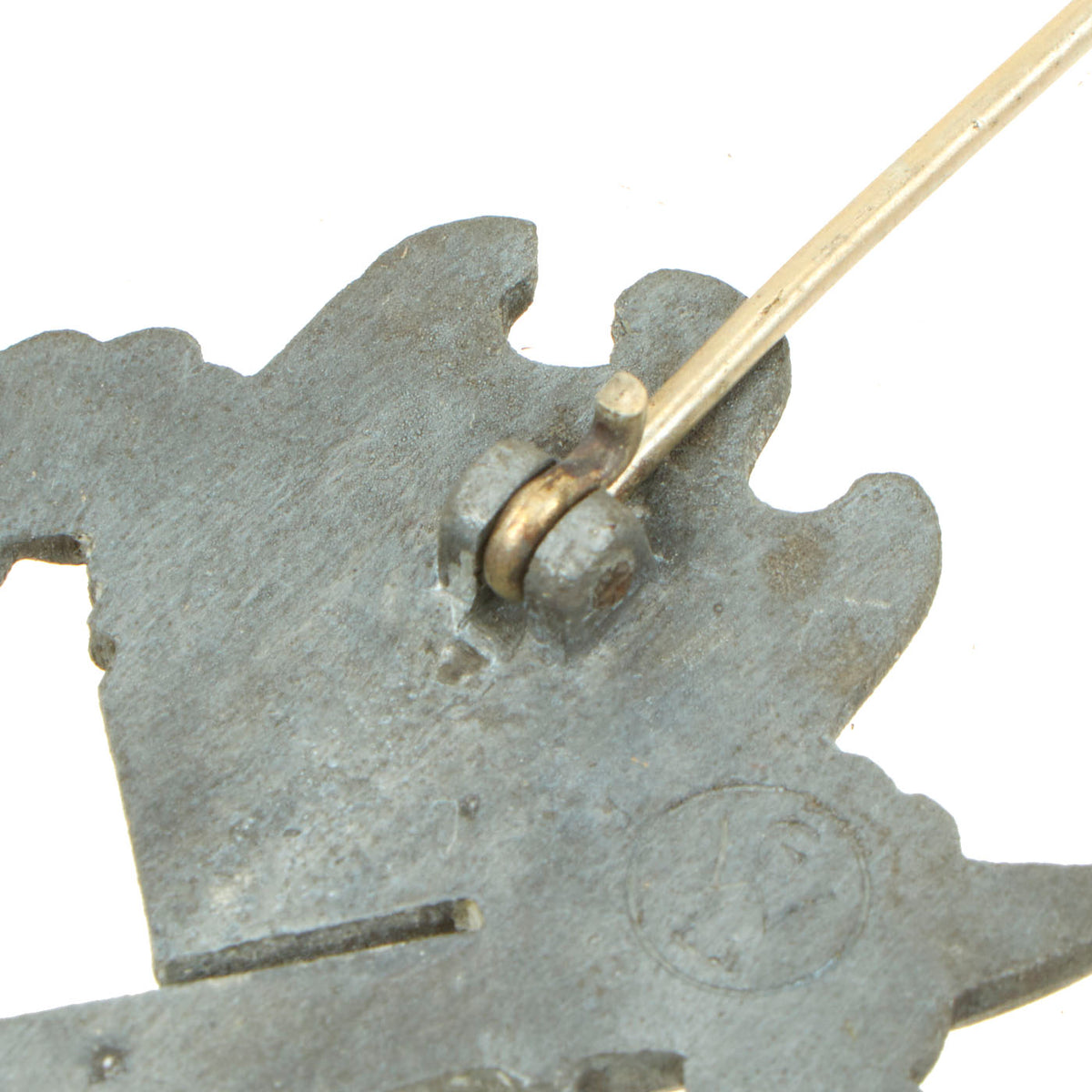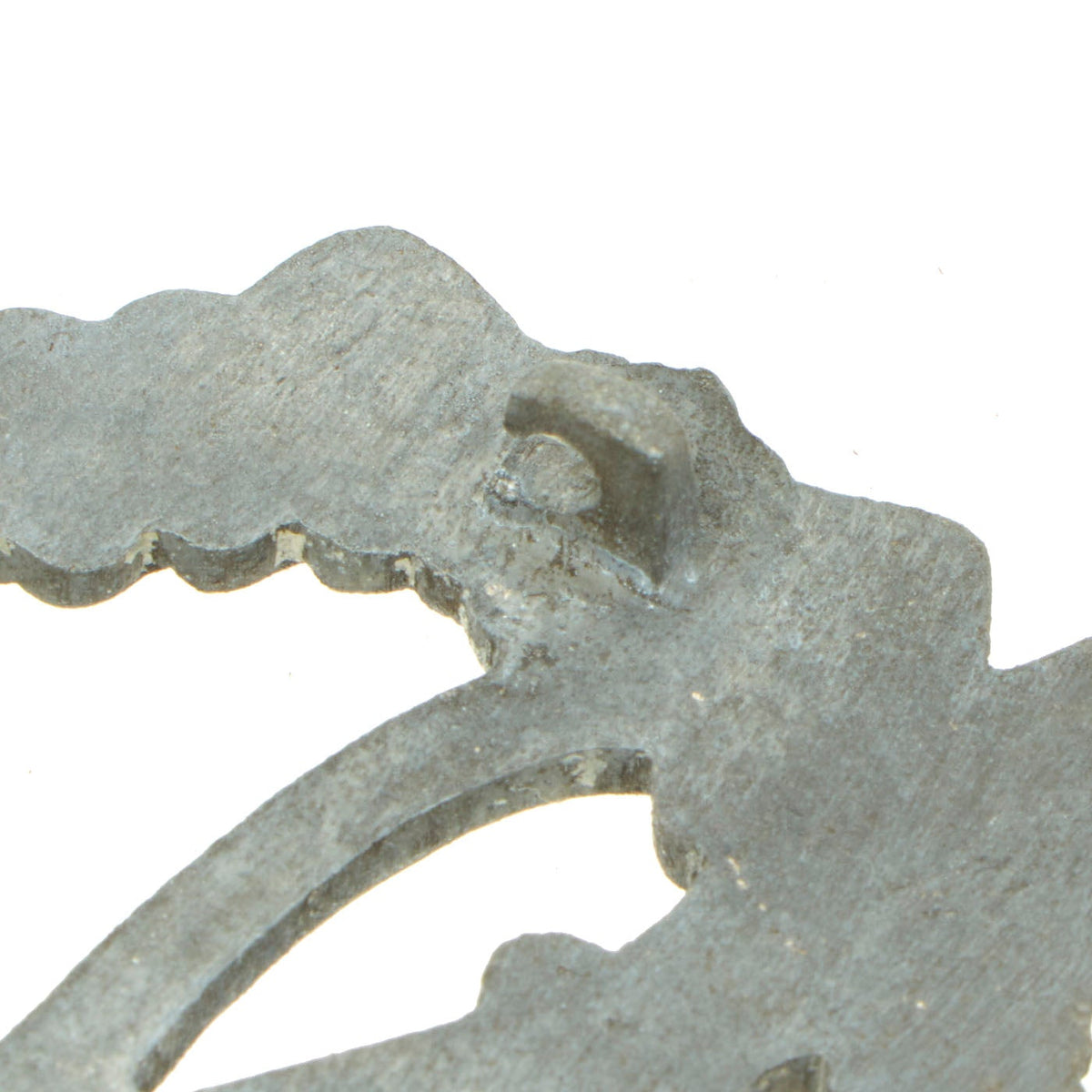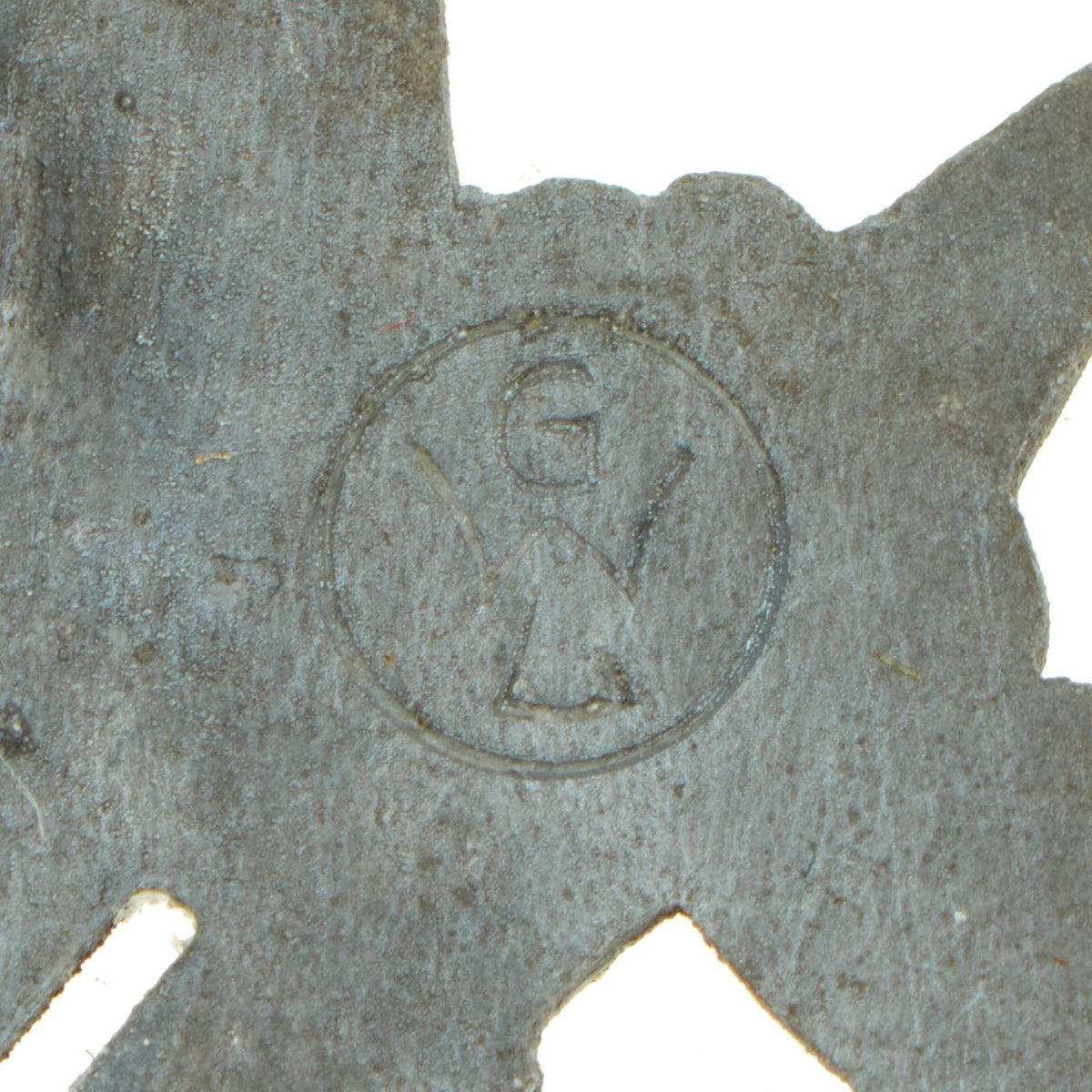Original German WWII Infantry Assault Badge by Gebrüder Wegerhoff – Silver Grade Original Items
$ 225,00 $ 90,00
Original Items: Only One Available. Called in German a Infanterie-Sturmabzeichen in Silber, this genuine badge is constructed of silvered zink; consisting of an oval oak wreath tied together at the base via a ribbon, with a national eagle clutching a mobile swas, with a vertically oriented Karabiner 98k with the bayonet attached to the front of the barrel and the carrying sling hanging from the rifle superimposed on the wreath; the reverse plain, with a vertical pinback, an integrated hinge, and an integrated catch; maker marked with the logo of Gebrüder Wegerhoff of Lüdenscheid (GWL) on the reverse; measuring 47.72 mm (w) x 62.37 mm (h); weighing 34.7 grams; in overall very good condition.
The Infantry Assault Badge was a German military decoration awarded to Waffen-SS and Wehrmacht Heer soldiers during the Second World War. This decoration was instituted on 20 December 1939 by the Commander-in-Chief of the German Army, Generalfeldmarschall Walther von Brauchitsch. It could be awarded to members of infantry and Gebirgsjäger (mountain infantry) units that had participated in infantry assaults, with light infantry weapons, on at least three separate days of battle in the front line on or after 1 January 1940. When a counter-offensive led to fighting, it could also apply. Award of the Infantry Assault Badge was authorized at regimental command level, and mechanized or motorized infantry were not eligible for the original badge. A bronze variant of the Infantry Assault Badge was created in June 1940, authorized for motorized and mechanized infantry units, using similar requirements for award as the original silver variant. Non-infantry personnel were not eligible for either grade of the Infantry Assault Badge, but were eligible for other combat recognition badges, usually the General Assault Badge, Close Combat Clasp, or the Panzer Badge. The Luftwaffe would develop its own ground combat badge in 1942, the Ground Assault Badge.
Silver
The silver class was instituted on 20 December 1939 by the commander of the OKH, Walther von Brauchitsch, and was awarded to infantry soldiers according to one of the following criteria:
To have taken part in at least three: infantry assaults (including counter-attacks) or at least three armed reconnaissance operations or engaged in hand-to-hand combat in an assault position or participated on three separate days in the reestablishment of combat positions.
Bronze
The bronze class was instituted on 1 June 1940. It was awarded to motorized/Mechanized Infantry troops according to the same criteria as listed above.
The badge was designed by the company C. E. Junker of Berlin. It is oval in shape, with four oak leaves on each side; on the top is a national eagle clutching a swas and a rifle with a fixed bayonet across the badge. The reverse of the badge is plain and has a pin attached to it. The original “silver” badges were made of silver-plate and the later ones were made of zinc. The “bronze” version was actually made of a “metal alloy”.
On 26 July, 1957, the West German federal government passed the “Law of Titles, Orders and Honours”, which permitted World War II veterans serving in the Bundeswehr to wear certain earned decorations from the conflict, as long as they were denazified. The Infantry Assault Badge was among the permitted decorations; The re-authorized version had the Reichsadler and swas removed. Denazified versions of both the silver & bronze grades were authorized and produced.
Fast Shipping with Professional Packaging
Thanks to our longstanding association with UPS FedEx DHL, and other major international carriers, we are able to provide a range of shipping options. Our warehouse staff is expertly trained and will wrap your products according to our exact and precise specifications. Prior to shipping, your goods will be thoroughly examined and securely secured. We ship to thousands clients each day across multiple countries. This shows how we're dedicated to be the largest retailer on the internet. Warehouses and distribution centres can be located throughout Europe as well as the USA.
Note: Orders with more than one item will be assigned a processing date depending on the item.
Before shipping before shipping, we'll conduct a thorough inspection of the items you have ordered. Today, the majority of orders will be delivered within 48 hours. The delivery time will be between 3-7 days.
Returns
The stock is dynamic and we cannot completely manage it because multiple stakeholders are involved, including our factory and warehouse. So the actual stock may alter at any time. It's possible that you may not receive your order once the order has been made.
Our policy is valid for a period of 30 days. If you don't receive the product within 30 days, we are not able to issue a refund or an exchange.
You can only return an item if it is unused and in the same state as the day you received it. You must have the item in its original packaging.
Related products
Uncategorized
Uncategorized
Uncategorized
Uncategorized
Uncategorized
Uncategorized
Uncategorized
Uncategorized
Band of Brothers ORIGINAL GERMAN WWII Le. F.H. 18 10.5cm ARTILLERY PIECE Original Items
Uncategorized
Uncategorized
Uncategorized
Uncategorized
Uncategorized
Uncategorized
Uncategorized
Australian WWII Owen MK1 Machine Carbine SMG Custom Fabricated Replica with Sling Original Items
Uncategorized
Uncategorized
Uncategorized
